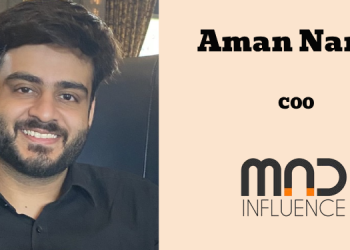The Changing Landscape of Brand Communication
Brand communication with consumers has changed dramatically as the digital age has progressed. For brands, the “pay-to-play” concept represents the landscape where ‘visibility’ is bought, not organically ‘earned’. While brands continue to invest in paid media, earned media is emerging as a critical component of a transformation in the digital marketing landscape. It offers brands a more genuine pathway to connect with consumers beyond conventional advertising.
Understanding Earned Media: Beyond Traditional Marketing
Earned media represents a strategic brand communication approach beyond paid promotions. It encompasses organic coverage through customer reviews, social media mentions, editorial features, and word-of-mouth recommendations. Unlike purchased media, earned media is gained through merit, requiring brands to deliver genuine value and compelling narratives with continuous effort.
Several Indian brands have splendidly mastered earned media to create significant market impact. Zomato, the food delivery platform, provides a prime example of how authentic communication can drive brand recognition. Their quirky social media approach and humorous content have generated millions of organic shares and media mentions, creating a brand personality that resonates with young Indian consumers.
India’s digital landscape has been a critical catalyst for earned media’s growth. Brands have never-before-seen chances to produce organic, shareable content because of the vast number of social media users and the more than 700 million internet users. The rise of platforms like Instagram, YouTube, and regional language social media has democratised brand communication.
The Evolution of Consumer Perception
Contemporary consumers have developed a sophisticated approach to media consumption. They possess an increasingly refined ability to distinguish between manufactured marketing messages and authentic, value-driven communication. This discernment has significantly elevated the importance of earned media, transforming it from a peripheral strategy to a central component of comprehensive brand communication.
Trust has become the primary currency in the digital marketplace. Consumers now prioritise transparent, context-rich narratives over polished, overly produced advertising messages. They seek genuine connections that provide real insights, practical value, and authentic representations of brand experiences.
Digital Platforms and Amplification Strategies
The ways through which brands can relate to their audience have been fundamentally altered by digital platforms. Brand storytelling has been completely revolutionised by social media, content platforms, and all other forms of digital communication channels. This has therefore enabled organic content to reach enormous extents with little or, in rare cases, no monetary cost. Such platforms are unprecedented opportunities for brands to tell authentic stories, to demonstrate their values, and to interact directly with the consumer.
The strength of digital amplification is its ability to make impactful connections. Brands are now enabled to tell relevant stories that resonate on various levels and make deeper emotional engagements beyond conventional marketing methods. This allows for a more subtle and individualistic form of communication, addressing the experience and expectations of the consumer individually.
Reasons for Brands to Adopt Earned Media
Earned media has emerged as a powerful communication strategy that resonates with consumers in ways traditional paid advertising often struggles to achieve. In an increasingly saturated media landscape, consumers have developed a sophisticated resistance to overtly promotional content, leading to phenomena like ad fatigue and banner blindness. Earned media effectively cuts through this noise by offering content that prioritises authenticity and genuine value. While paid campaigns can generate rapid visibility, they are becoming progressively more expensive with diminishing returns on investment. In contrast, earned media, despite requiring significant initial resources, delivers substantially better outcomes in terms of trust, credibility, and long-term audience engagement. The inherent human-centric appeal of earned media—rooted in storytelling, genuine reviews, and authentic endorsements—creates an emotional connection that cannot be replicated by traditional advertising methods. Unlike paid media, which primarily serves short-term visibility objectives, earned media represents a strategic approach to building steady, loyal relationships with audiences, making it an indispensable tool for brands seeking meaningful and sustainable consumer connections.
Strategic Challenges and Opportunities
Implementing an effective earned media strategy in India requires a nuanced understanding. Brands must navigate diverse linguistic and cultural landscapes, creating content that connects across different regions and demographic segments. The challenge lies in maintaining authenticity while achieving widespread appeal.
Companies like Amul have long understood this principle. Their topical, witty billboard advertisements have consistently generated media coverage and social media discussions, proving that clever, relevant content can transcend traditional marketing boundaries.
The Integrated Communication Approach
Successful earned media strategies typically combine ‘paid media’ for initial reach and ‘owned media’ platforms for consistent storytelling and ‘earned media’ to build credibility and trust.
Nykaa, the beauty and wellness platform, exemplifies this approach. By combining influencer partnerships, user reviews, and authentic content marketing, they created a brand that feels more like a community than a traditional retail platform.
Consumer Trust in the Digital Age
Indian consumers are increasingly sceptical of traditional advertising. They seek transparent, genuine communication that provides real value. Brands like Zerodha in the financial services sector have built entire businesses around transparent communication, using educational content and user testimonials to build trust.
The Future of Brand Communication
Genuine connection, authenticity, and relevance will be the defining characteristics of brand communication in the future. Brands will have a major chance to boom in this new media environment if they can tell gripping tales, interact with their audiences in a meaningful way, and deliver real value.
Digital platforms have levelled the ground, allowing smaller brands to compete with established players through creative, authentic communication. How well a brand can connect with its audience is gaining more importance than how much money can be spent on advertising.
(Views are personal)

















